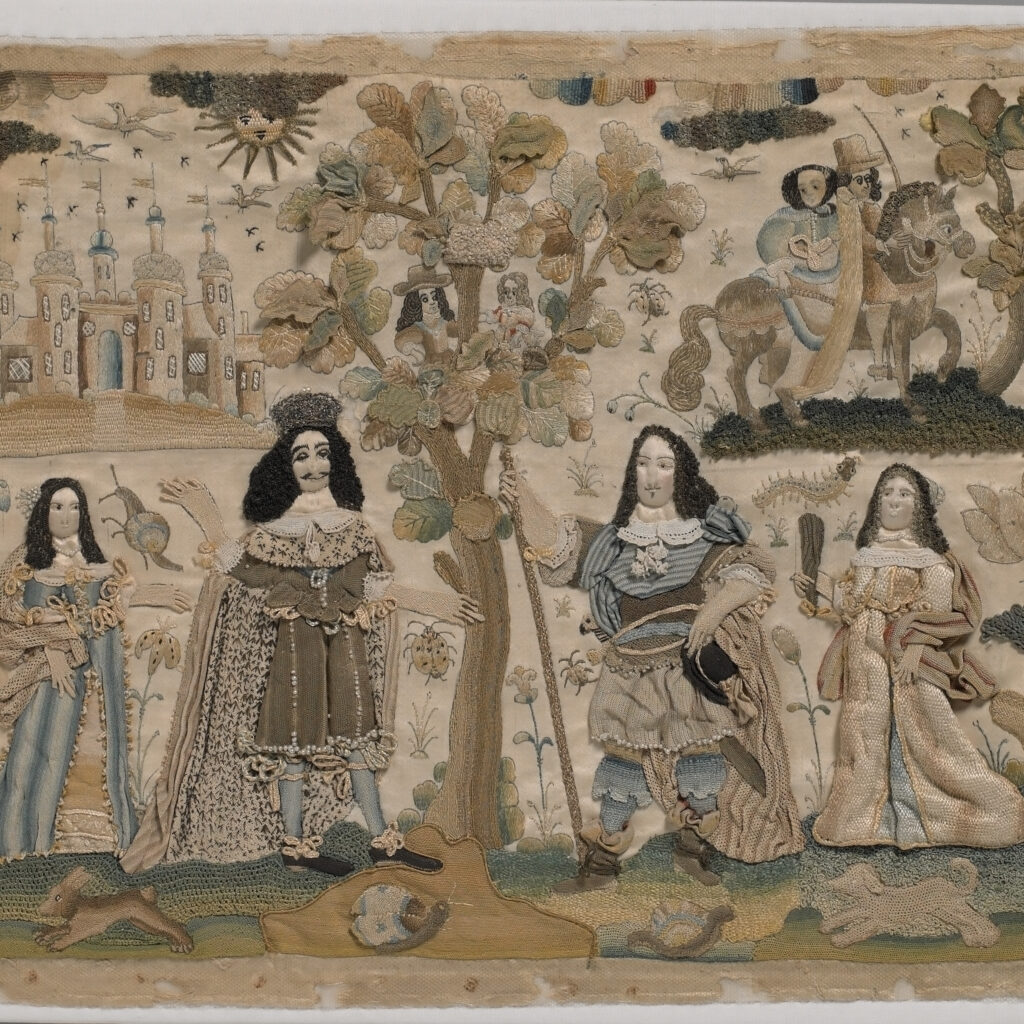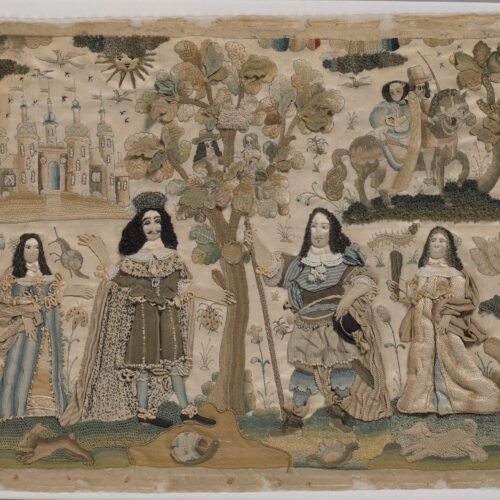The Restoration of Charles II
English raised embroidery worked on a white satin ground, embroidered in silk with linen lace, metal threads, pearl beads and mica, about 1665
Bequest of Miss Mildred Alice Carr, 1963
Most women, no matter how rich or poor, were expected to be competent at needlework during the seventeenth century. However, only a privileged few were able to afford the time or materials to make decorative embroidered pictures. The Holburne Museum has a remarkable collection of these. Most were made by young, highly skilled amateur needlewomen in wealthy households and were designed to show off their mastery of the craft, although a few may be the work of professional embroiderers, who were usually men. Many of the embroideries incorporate raised work (or stumpwork), the technique of embroidering over padding in high relief. Their enduring appeal comes from the combination of exceptional craftsmanship with the naïve charm of designs which often include outsized animals, birds and insects.
This fine example of raised work shows the small figures of the young Charles II and his companion William Carliss hiding in the Boscobel Oak following his defeat at the Battle of Worcester in 1651. Above to the right, he is seen disguised as a servant escaping on horseback with Jane Lane. In the foreground, the mature Charles II is shown wearing his crown, following his restoration to the throne in 1660, flanked by Queen Catherine of Braganza. To the right of the tree is the fine raised and padded figure of General Monck, 1st Duke of Albemarle and an unidentified female courtier.
The panel is worked on a white satin ground fabric, embroidered in silk with linen lace, metal threads, pearl beads and mica. The basic leaves of the oak tree are worked in silk split stitch while the trunk and branches are in laid and couched silk-covered wire and the raised leaves are in detached work on wire frames. The four main figures in the foreground are all raised and padded about the face, with hair made up of silver -covered wire coils in various shades of black and brown. They all have hands made up in detached work and applied along with their various garments.
Don’t forget new resources inspired by our collection are live from 11am every Wednesday for our free virtual art class Creativity4Wellbeing


